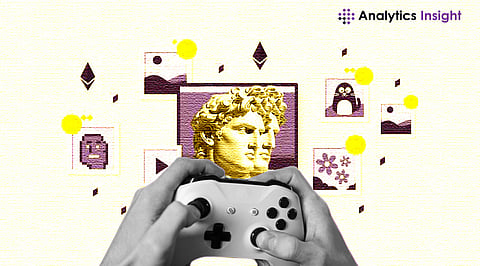

Cryptocurrencies have changed the traditional financial structure through decentralized application of digital assets, especially Non-Fungible Tokens (NFTs). Over the last few years, the use cases of NFTs have been applied to the gaming domain where players unfortunately require proprietary items within games and be able to buy, sell and even sell them on Marketplace securely.
In this mega guide, we discuss some of the most important concepts, technologies, stages of development, and research findings relating to NFT games and the evolution of the NFT game market. Understanding NFT Games
NFT games are built on the blockchain to produce trustable digital assets where players could stake, exchange, or utilize in other games. While in ordinary games such items as clothing, guns, and other enhancements belong to players but are governed by developers, NFT games allow players to own their in-game assets freely, thus creating decentralization of the gaming market.
Non-Fungible Tokens (NFTs): Crypto collectibles, or file illustrations, which correspond to exclusive rights of ownership on unique assets on a blockchain.
Smart Contracts: Smart contracts that enable generation of new NFTs and transfer and management of these assets with confidentiality and security.
Decentralized Finance (DeFi) Integration: Using NFT for virtual assets inside games, the ability to trade and finance between players
When creating NFT games, the following steps and certain technologies need to be followed and incorporated to create an effective and successful symbiosis of both blockchain and gaming elements.
Game Design: Think up powerful motivational gameplay elements and plots based on NFTs as their essential parts.
NFT Utility: Explain how it can fit in the game and be used like, for example, items or property that players can collect, buy/ trade, or use in some other way.
Platform Compatibility: Select a blockchain (Ethereum, Binance Smart Chain and so on) from the point of view of expansion capacity, per action costs, etc
Smart Contract Development: Create well-organized distributed computing programs to create, control, and sell NFT on the perceived blockchain.
NFT Minting: Incorporate ways to freeze assets as new NFTs exclusive to the game, characters or items, etc.
Interoperability: Promoting compatibility of NFTs whether in a gaming system or a marketplace to attract more players
Backend Integration: Design the blockchain features as modules which will connect to the game’s back end engine to manage the NFT and user interactions.
Frontend Development: Design user interfaces that would highlight the ownership of NFTs, trading interfaces and in-game asset interface.
Security Audits: Perform intensive testing and security assessments to find the problems with smart contracts and gaming mechanics.
Deployment Strategy: Launch and run the NFT game on testnets and real live mainnets to allow analysis of scalability and efficiency of the product.
The market of NFT games has recently grown exponentially due to the growing usage of blockchain technology and new DeFi platforms.
Popularity of Play-to-Earn: This term means usage of games to offer an opportunity to earn cryptocurrency or NFT has received massive traction.
Integration with DeFi: NFTs taken as collaterals in DeFi platforms add more value and liquidity to them.
Cross-Platform Compatibility: NFT interoperability across the various gaming platforms and marketplaces is creating a healthy environment.
Monetization: There are three ways to monetize NFT games among developers, including NFT sale, transactions, and secondary markets royalty fees.
Community Engagement: It is efficient to involve players with purchase of exclusive and beneficial objects within the game since it increases people’s loyalty and activity.
Innovation: Games built on NFTs also means beginning the process of stimulating creativity in the business models of games, which is a positive thing for the industry.
Scalability: Some of the challenges that are associated with blockchains may have an influence on NFT games for example congestion challenges that comes with high traffic.
Regulatory Environment: Perhaps, the legal policies point out that cryptocurrency and other digital assets may affect the design and implementation of NFT games.
User Education: The four Ps of the marketing mix also require thorough understanding among the players such as knowledge on what blockchain technology is all about as well as learning more about the ownership of NFTs.
Future of NFT games looks bright because of constant development of blockchain and its expansion toward classical gaming industries. The gaming industry is still far from set in its use of NFTs as developers keep experimenting with new use cases and new opportunities will be opened for the players, developers, and investors in the future.
